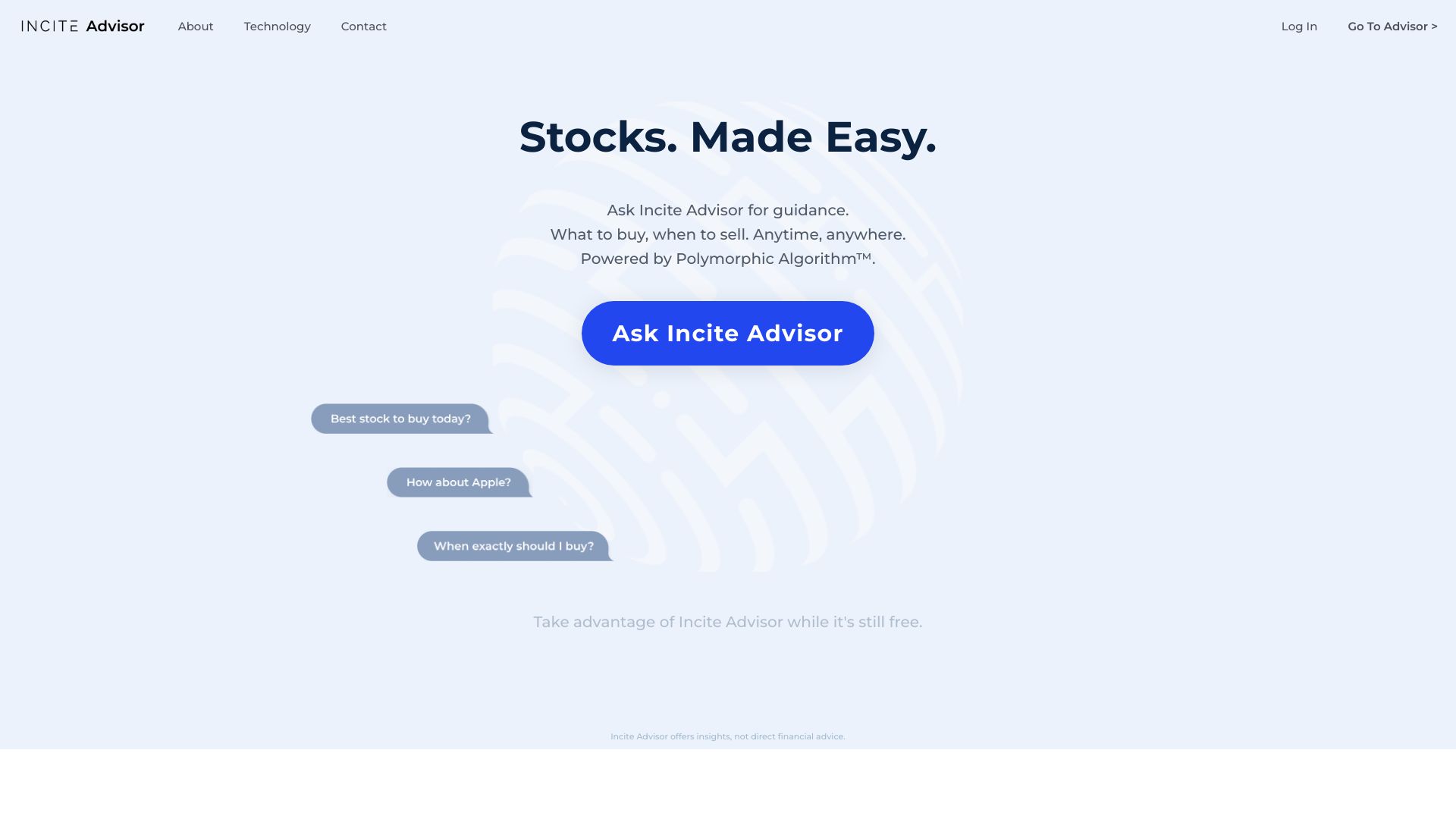20 New Info To Selecting AI Stock Investing Analysis Websites
20 New Info To Selecting AI Stock Investing Analysis Websites
Blog Article
Top 10 Tips For Evaluating The Strategy Customization Of Ai Stock Predicting/Analyzing Trading Platforms
AI trading platforms that predict/analyze stocks are known for their ability to customize strategies to meet the needs of their users. This enables them to adjust to specific goals and conditions, including risk tolerance. A platform with a variety of customization features will enhance your trading. Here are 10 top strategies to help you evaluate the platform's ability to customize your strategy:
1. Evaluate Pre-Built Strategy Templates
A variety of templates to choose from - Check for built-in strategies that are designed to accommodate different styles of trading.
You are able to easily alter the templates and tailor them to meet your particular needs.
Performance history: Determine if the platform provides historical performance data for pre-built strategies.
2. Assessment Customized Strategy
Drag-and-drop software: Search for platforms that have intuitive drag-and drop interfaces to design custom strategies.
Coding options: Determine whether the platform allows custom programming (e.g., Python, R or any other scripting languages) for advanced users.
Flexibility: Make sure the platform lets you define entry/exit rules as well as risk management parameters and other essential elements of your plan.
3. Check for Backtesting Capabilities
Historical data. Examine whether the platform can provide sufficient historical data in order to test the strategy.
Customizable Parameters: It is important to be able to adjust parameters, such as indicators and timeframes during backtesting.
Performance metrics: Find out whether the platform has specific performance metrics for backtested strategies (e.g. win rate, sharpe ratio, drawdown).
4. Evaluate Real-Time Strategy Testing
Paper trading: Make sure that the platform supports the option of paper trading as well as simulation mode for testing strategies in real time, without placing your money at risk.
Live testing: See if you can run strategies in live markets with tiny amounts of capital to test their effectiveness.
Real-time adjustments: Determine whether it is feasible to adjust strategies according to the current market conditions.
5. Evaluation of Integration based on Technical Indicators
Indicator library: See whether the platform has an extensive collection of technical indicators (e.g., moving averages, RSI, MACD).
Custom indicators: Ensure you have the ability to create or import custom indicators that you can use in your strategies.
Combination of indicators Look to see if the system allows the combination of multiple indicators to create more complex strategies.
6. Check for Risk Management Tools
Stop-loss/take-profit: Ensure the platform allows you to set stop-loss and take-profit levels within your strategies.
Size of the position. Find out if you are able to establish rules for the size of positions (e.g. percentage or a fixed amount) and control the risk.
Risk-reward: Check if your platform allows you to set risk-reward for each trade or strategy.
7. Evaluate Multi-Asset Strategy Support
Asset classes: Ensure that your platform is able to support multiple asset classes, like ETFs, stocks and options.
Cross-asset strategies: See if you can create strategies that incorporate multiple asset classes (e.g., pairings trading, hedging).
Market coverage. Make sure the platform has market coverage that you're interested in (e.g. US international, cryptocurrencies).
8. Assess Automation, Execution and Execution
Automated trading. Ensure the platform supports automated execution based on predefined strategies.
Types of orders: Check to see if the platform permits different order types (e.g. limit or market) when you are executing a plan.
Latency - Test the ability of the platform to execute trades on time, especially when using high-frequency strategies.
9. Take a look at the Strategy Optimization Tools
Parameter optimization. Check that your platform permits you to improve the parameters of your plan (e.g. Grid search, Genetic algorithms).
Machine learning Integration: Determine whether a platform is able to integrate machine learning to optimize and refine the strategy.
Scenario analysis: Check if the platform permits you to test various strategies under different market scenarios (e.g. bear, bull, volatile).
Review User Feedback
The feedback of users is crucial to assess the performance of an application.
Community forums. Verify if members can share their knowledge and discuss their strategies in a lively community.
Support resources: Ensure that the platform has tutorials, webinars, or documents that will help users develop and enhance their strategies.
Bonus Tips:
Trial period: Use the demo or trial version for free to try out the platform's customization features.
Scalability - Make sure that the platform you choose is able to manage your ever-changing trading strategies.
Customer support: Verify whether the platform provides support for any strategy-related queries.
If you follow these guidelines, you can evaluate the capabilities of an AI platforms for analyzing and predicting stocks to modify strategy. This will enable you to select a trading platform that aligns with your goals in trading and allows you a way to develop and refine strategies. A platform that offers powerful customization options will allow users to be able to change market conditions and improve the performance of your trading. View the recommended ai investing app for blog examples including investment ai, best ai trading app, ai trade, ai for stock predictions, market ai, ai stock, ai for stock trading, ai stock, ai for stock trading, trading ai and more.
Top 10 Tips On Assessing Regulatory Compliance Using Ai For Stock Predicting/Analyzing Trading Platforms
When evaluating AI trading platforms, regulatory compliance is a crucial aspect. Compliance can help ensure that the platform operates in compliance with legal guidelines and protecting user data. Here are the top 10 tips to assess the regulatory compliance of these platforms:
1. Verify Registration and License
Authorities regulating the platform: Make sure that the license and registration is with the appropriate financial regulatory authorities (e.g. SEC or FCA in the United States, ASIC or ASIC in Australia).
Verify partnerships with brokers. If the platform integrates brokers, make sure they are properly licensed and monitored.
Public records: Go to the website of the regulator to find the status of registration and any previous violations.
2. Check for Data Privacy Compliance
GDPR when operating in the EU or offering services to EU users the platform must comply with the General Data Protection Regulation.
CCPA: For users in California Verify conformity to the California Consumer Privacy Act (CCPA).
Data handling policies: Review the data privacy policy of the platform to see the way it describes the data collection, storage and sharing.
3. Evaluation of Anti-Money Laundering Measures
AML policies: Make sure the platform has robust AML policies that are in place to prevent and detect money laundering activities.
KYC Procedures: Verify whether the platform has procedures in place to verify the identity of users.
Examine the platform's monitoring of transactions. Does it monitor transactions and report any suspicious activity to relevant authorities?
4. Verify your compliance with Trading Regulations
Market manipulation: Make sure that the platform has measures in place to prevent manipulation of the market like spoofing or wash trading.
Order types: Verify if the platform meets the regulations for order types (e.g. there is no illegal stop-loss hunting).
The best execution: Ensure that the platform follows the best execution practices. This will ensure that trades are carried out at the best possible price.
5. Cybersecurity compliance assessment
Data encryption: Make sure that the platform protects user data both while it is in transit as well as when it is in rest with encryption.
Incident response Incident response Verify the system's plans to respond in case of cyberattacks or data breaches.
Certifications: Verify if the platform has cybersecurity certifications.
6. Examine Transparency and disclosure
Disclosure of fees: Ensure that the website discloses all fees including hidden or additional fees.
Risk disclosure - Verify that the platform provides clear risks and disclosures. This is particularly important for trading strategies with high leverage or risk.
Performance reporting: Find out whether the platform offers precise and transparent performance reports for its AI models.
7. Verify the compliance to International Regulations
Trading across borders. If you intend to trade internationally, check whether your platform is compliant with all applicable regulations.
Tax reporting: Verify whether there are tax reporting reports or tools available to assist you in complying with the tax regulations.
Compliance with sanctions: Check whether the platform is in compliance with international sanctions, and is not able to trade with countries or entities that are banned.
8. Review the Records-keeping and Audit Trails
Transaction records: Make sure the platform maintains detailed records of all transactions to be used for audits and regulatory purposes.
Logs of user activities: Check if your platform tracks all activities by users, such as transactions, logins, and the changes to account settings.
Audit-readiness: Find out if the platform will be capable of generating all the required documents and logs to support an audit by a regulatory agency.
9. Assess compliance with AI-Specific Regulations
Algorithmic Trading Rules: If your platform supports algorithmic trades, make sure it is compliant with the regulations such as MiFID II (in Europe) or Reg SCI (in the U.S.).
Fairness and Bias: Examine for any biases that the platform can control and minimize within its AI model. This will ensure ethical and fair trade.
Explainability. Certain regulations may require that the platform explain AI-driven prediction and decisions.
10. Review User Commentaries as well as Regulatory Historical Historiography
User reviews: Study user feedback to gauge the platform's reputation for regulatory compliance.
Historical Record: Search for past violations of the regulations, fines or penalties.
Third-party auditors: Check if the platform is audited regularly by third parties to ensure that it adheres to the rules.
Bonus Tips
Legal consultation: Consult an attorney to make sure that the platform complies with all applicable regulations.
Trial period: Try the demo or trial version for free to evaluate the platform's conformity capabilities and the documentation.
Support for customers: Make sure the platform offers support in case of questions or problems with respect to compliance.
Follow these tips to evaluate the regulatory compliance and protection of your interests. Compliance does more than reduce legal risks, but can also increase confidence in the platform. Take a look at the recommended best ai trading platform advice for site recommendations including best ai penny stocks, best ai penny stocks, ai options trading, ai in stock market, ai stock prediction, free ai tool for stock market india, ai options, ai stock investing, free ai tool for stock market india, ai stock investing and more.